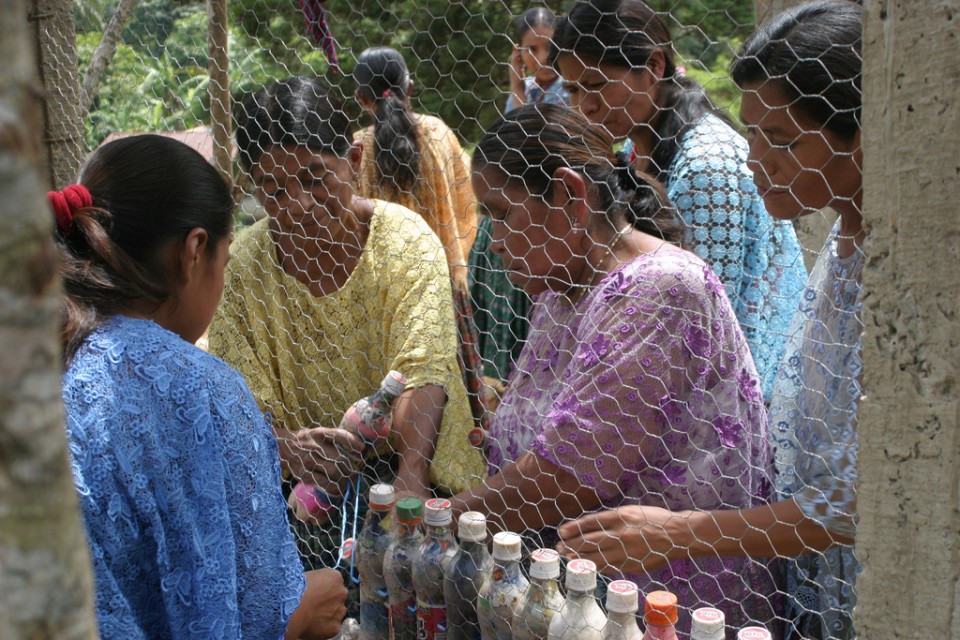Building a bottle school is not very different from building a regular school using post and beam construction. The key differences are:
- A lot of plastic bottles and trash need to be collected in order to make sufficient “eco- bricks”, which will be used in place of cinder- blocks or bricks.
- You need to insert pins (short pieces of rebar) into the columns and beams before the concrete sets, and then you attach chicken wire to the pins.
- Tie eco-bricks to the chicken wire, row by row, and then stretch another layer of chicken wire over the other side of the eco- bricks.
- Add a cement stucco finish so that from the outside, you can’t even see the bottles.
The first thing you need to do, is collect enough bottles and trash. This takes a community effort, so if your community is not behind this idea, it’s not going to work. It might take some time for people to understand the idea of building a school out of trash; be patient.




